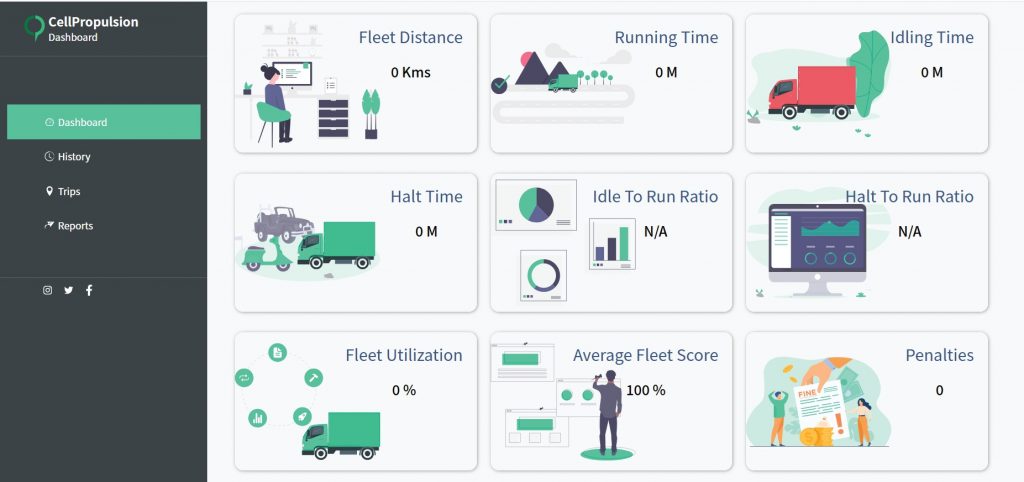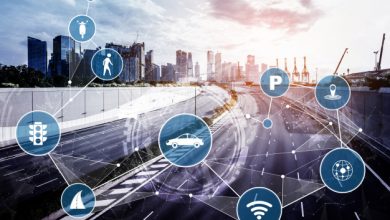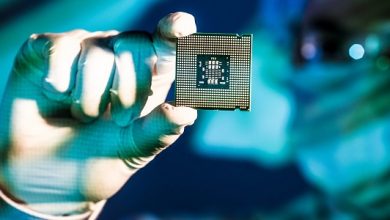Vehicle Autonomy – The case for commercial fleets

Terrestrial mobility has progressed into an era where Autonomous Vehicles (AVs) are not “just around the corner” anymore. The technology is rapidly evolving and witnessing an unprecedented pace of development through the convergence of edge computing, AI and Data Analytics.
We see two types of players in this segment – well-capitalized entities (big car companies) with dedicated R&D teams and full stack autonomy start-ups who are developing innovative AV technologies while figuring out the business model. With no clear path to funds outside of venture capital, full-stack startups are forced to:
1. get acquired for the tech and talent or
2. shut down operations completely
(Peters, 2019)
Autonomous passenger car projects have attracted a lot of capital and talent in the past decade and have created tremendous technological advances in vehicle perception, path planning and control. Recent exits like Uber ATG getting acquired by Aurora in December-2020, Argo AI acquisition by VW in June-2020, etc has indeed resulted in creation of many different types of products related to vehicle autonomy but none of them could generate profits or even revenue in their respective business case.
All these developments indicate that autonomous passenger vehicles are still a long way from commercial deployment owing to the business and regulatory challenges with expectation of further delay due to COVID-19 creating additional anxiety towards shared mobility.
Current Status
Advanced Driver Assistance Systems (ADAS) have been around for decades and are proven to make the driving experience safer, smoother and cleaner. Features like Active lane keeping functions, Lane departure warning, Reverse Assist, Adaptive Cruise Control, etc are already available in production vehicles readily.
However, the Indian commercial vehicle industry has lagged in the adoption of ADAS. We are now witnessing gradual adoption of ADAS in the industry along with proliferation of connected features. This has resulted in revamping of the vehicles for deployment of new hardware like cameras, radars, advanced lane keeping systems, reverse assist kits, etc.
Advent of EV technology will only accelerate the adoption of vehicle connectivity and vehicle ADAS as EVs require constant connectivity and monitoring to deliver on its promise of operational cost savings.
Driver assistance increases safety while driving
As control starts moving from the driver to the vehicle, data that aids decision-making on the road is essential to a safer ride. More advanced ADAS use cases, such as highway assist, combine adaptive cruise control with lane keeping assist. By controlling acceleration, coasting, braking and steering, the on-board computer enables driving at the right speed.
Driver assistance enables higher energy efficiency
For some businesses, success depends on meeting delivery times while minimizing costs. Leveraging data to enable real-time location intelligence based alerts to the driver will aid in optimizing operations for a fleet. Optimal routes will be suggested to the driver based on realtime traffic and weather conditions.
On-board ADAS features utilize the power of edge computing to provide driving assistance features like Accident Prediction and automated braking, highway autopilot with lane-keeping and accident prediction. Such features will not only make it easier for the driver, but also maximize up-time.
Transition to Vehicle Autonomy
A gradual shift is expected from ADAS to full vehicle autonomy. However we believe that this change will be primarily driven by automation of trucks, industrial, agriculture, construction and mining vehicles instead of passenger cars. This will enhance existing autonomous programs, open up new ROI use cases in those sectors and reshape the autonomous vehicle business model in some of the sectors.
The approach for this transition can vary from few players gradually upgrading their ADAS to Level-2 autonomous systems and developing them further to Level 4 and Level 5 autonomy while some players directly attempting to build Level 4 and/or Level 5 autonomous systems.
AV Technology Stack
The major technology developments for AVs happen in the domains of machine perception, sensor fusion, SLAM, reinforcement learning for robotic motion planning and establishment of functional safety for autonomous vehicles.
Perception systems deployed on vehicles will include radars, cameras, etc., for safety, environment awareness, driver monitoring, and lane assist. Camera and radar-based perception systems will be key for autonomous vehicles to understand elements in their environment — allowing them to perform complex navigational tasks and operations.
Sensor fusion algorithms will allow commercial vehicles to take decisions on the road or mining vehicles to understand ore characteristics to increase productivity per scoop.
SLAM algorithms take the sensor output (predicted pose) and perform the complex task of simultaneous localization and mapping. Using deep learning, the vehicle places itself in a 3D map and then also updates the map at the same time.
Reinforcement learning algorithms are extensively used as the AI driving agent of an AV. The agent learns to drive on the road in a simulation environment and can easily adapt to the physics on the road using transfer learning. SLAM output is taken as an input and based on the scenario, throttle, steering and brake commands are sent to the vehicle actuators.
Finally, the most important criteria for the success of AV technology are high reliability and safety. Autonomy only achieves its full potential if the solution works with minimal downtime and improves safety (which is also tied to equipment replacement costs, driver compensation and insurance).
Autonomy for Commercial Vehicles
The DARPA Grand Challenge is the driving force behind the Google self-driving car project (Waymo) and the subsequent explosion of passenger car AVs. The advances made during the challenge also spilled over to commercial vehicle fleets. Since then, autonomous vehicles have been developed and tested for long haul trucking as well as commercially in large-scale agriculture, mining and defense in various countries.
There is a prevailing consensus in this sector that the goods transport, industrial, agriculture, construction and mining applications are better suited for near-term autonomy. The environment is more-constrained, well-defined with fewer edge-case scenarios. The driving itself is much more linear making it easier for the driving agent (AI) to be trained and also take decisions in real time.
The Vision
Cellprop’s team has developed level-2 autonomous vehicle technology stack and deployed on a pilot vehicle. Equipped with cameras and radars, the onboard RL agent drove the vehicle at cruise speed with success.
Now, a forerunner in connected electric commercial vehicles, Cellprop is developing electric CVs ranging from eLCVs to eHCVs. These vehicles are offered with internet connectivity as a default feature. Our in-house developed Mobility Platform leverages this connectivity to enable over-the-air (OTA) updates for deploying advanced driver assist features while also offering battery health monitoring and fleet management solutions. In coming years this vehicle connectivity layer will form the basis of deploying software for vehicle autonomy and consistently improving its performance.
Recently, the Indian ministry of road and transport has cleared the fully automated GPS based toll collection system which eliminates the need of toll booths completely. Every vehicle on the road has an onboard GPS device which will track vehicle movements across the country and deduct the toll from the linked bank account of the vehicle owner, accordingly. The government also is enabling a plan to equip all existing vehicles with a telematics solution to achieve this future. Currently, all new commercial vehicles are already equipped with GPS tracking technology. (Mehra, 2020) Such intiatives by the government will boost R&D in the vehicle telematics industry and pave the way for AVs.
Our vision is of a future where large fleets of connected autonomous electric long-haul trucks transport goods across the length and breadth of the country and transform logistics and carrier industry for good.
Future Outlook
There is a prevailing misconception that AVs will render truck drivers jobless. Articles like “Self-driving technology Threatens Nearly 300,000 Trucking Jobs, Report Says” have been published numerous times. (Smith, 2018)
The author agrees that there will be fewer drivers on the road, but that doesn’t mean the role of humans is eliminated. Humans will operate fleet operation centers, where drivers can be trained to take the role of a truck operator, who will manage a single truck or a convoy and monitor every aspect of the truck and road remotely and if needed, take control of the vehicle and drive it remotely.

Like Mission Operations centers that operate 24×7 to handle a network of remote sensing or communications satellites, CV fleet owners will operate fleet operations centers with a team to monitor and control all autonomous operations.
Autonomous trucks will eventually drive around the country solving all our logistics needs and fleet owners/operators will play a pivotal role in enabling and adapting to this technology in a structured manner to achieve connected electric autonomous mobility.
References:
- Peters, Jeff – Autotech Ventures, Tech Crunch, July 10, 2019 – The future of autonomous vehicles runs off roads and onto farms, construction sites and mines – https://techcrunch.com/2019/07/10/autonomous-vehicle-startups-are-dead-long-live-autonomous-vehicle-startups/
- Mehra, Jayveer – Columnist, AutoCar India, December 18, 2020 – GPS based toll collection to replace toll booths in the next two years – https://www.autocarindia.com/industry/gps-based-toll-collection-to-replace-toll-booths-in-next-two-years-419447
- Jennifer Smith – The Wall Street Journal, Sept. 4, 2018 – Self driving technology Threatens Nearly 300,000 Trucking Jobs, Report Says – https://www.wsj.com/articles/self-driving-technology-threatens-nearly-300-000-trucking-jobs-report-says-1536053401
Author:
Graduating in 2011 with a BTech in Avionics from the first batch of the Indian Institute of Space Science and Technology (IIST), Rohan started his career with ISRO. Worked in spacecraft operations for 5 years in Bangalore and resigned in 2016 to move to Germany for a master’s degree. Came back to India post MBA and joined Cell Propulsion leading all software and IoT efforts.
Published in Telematics Wire





